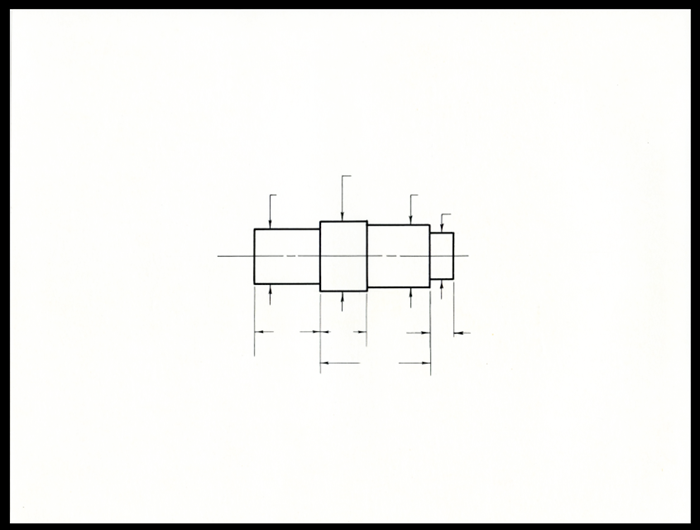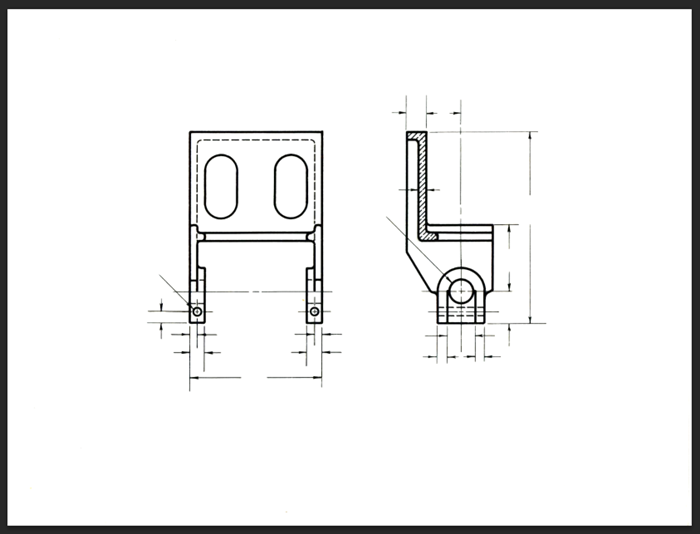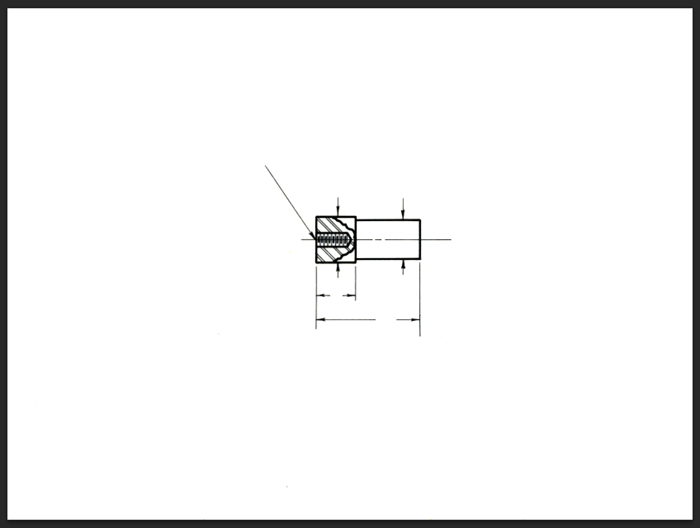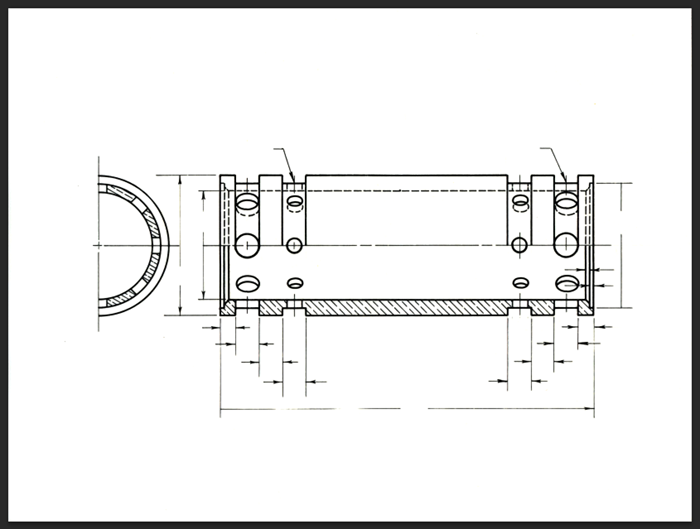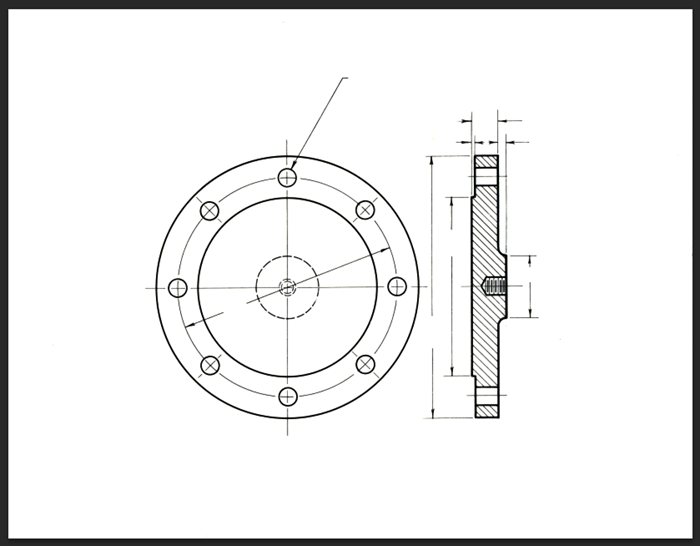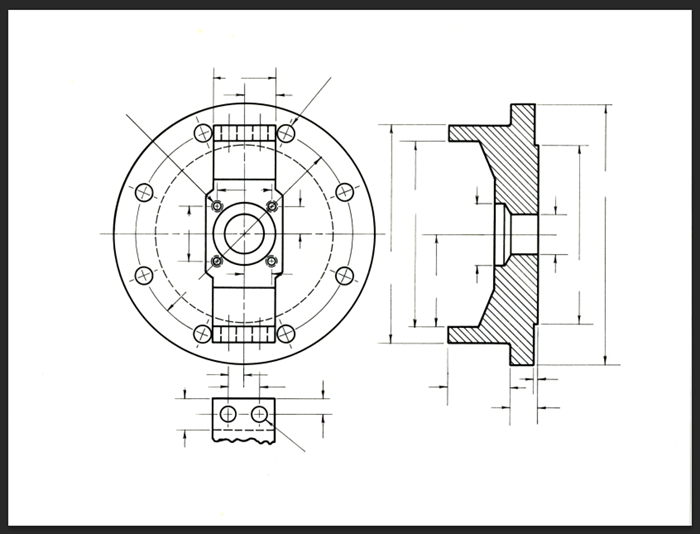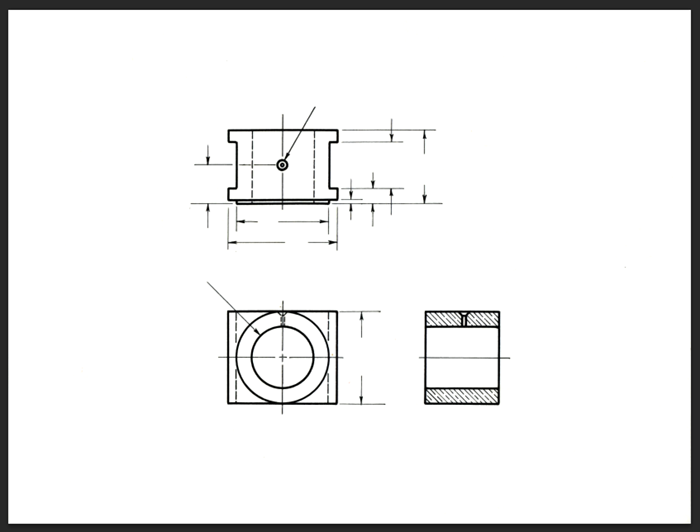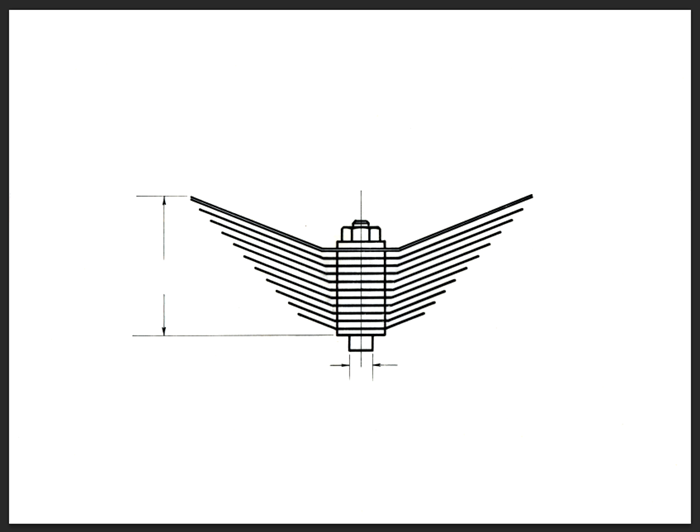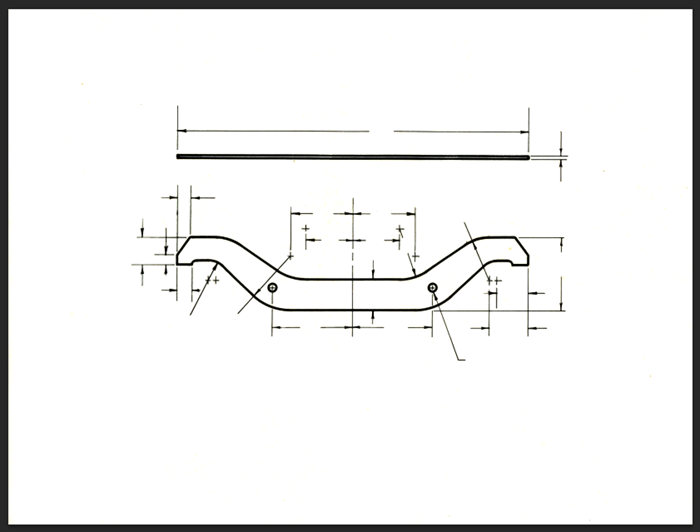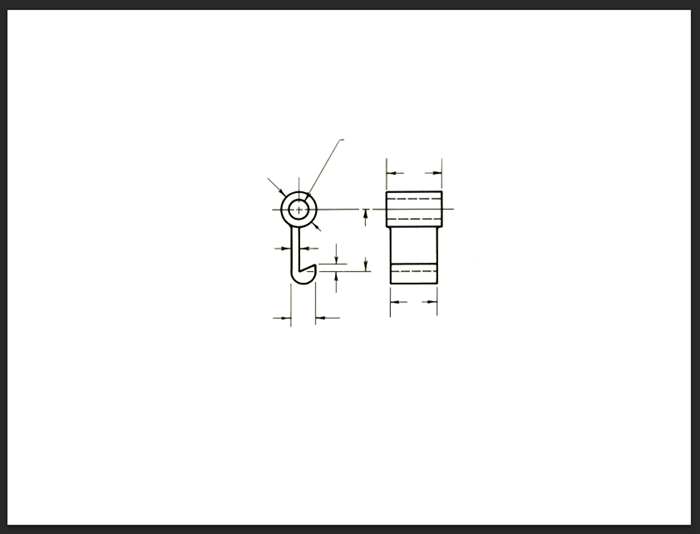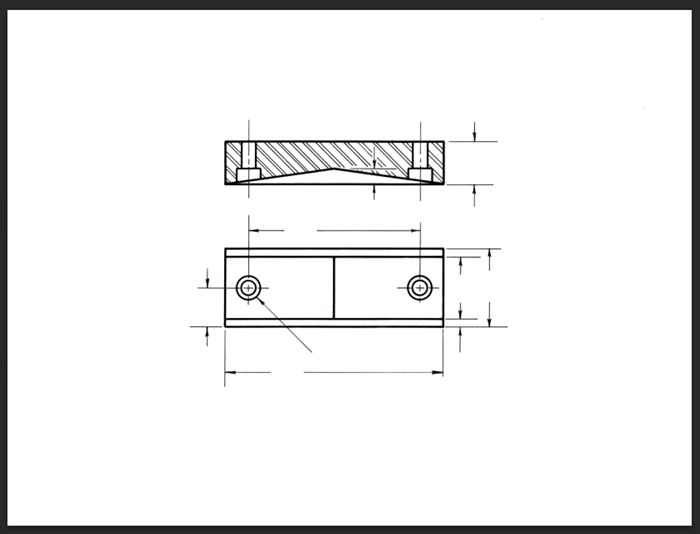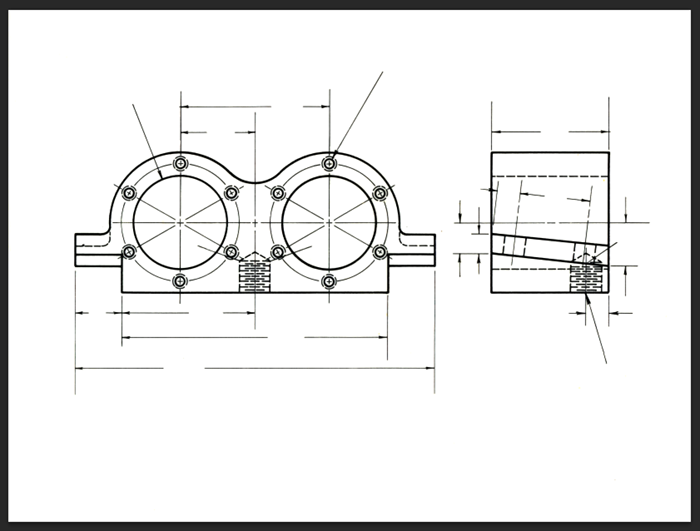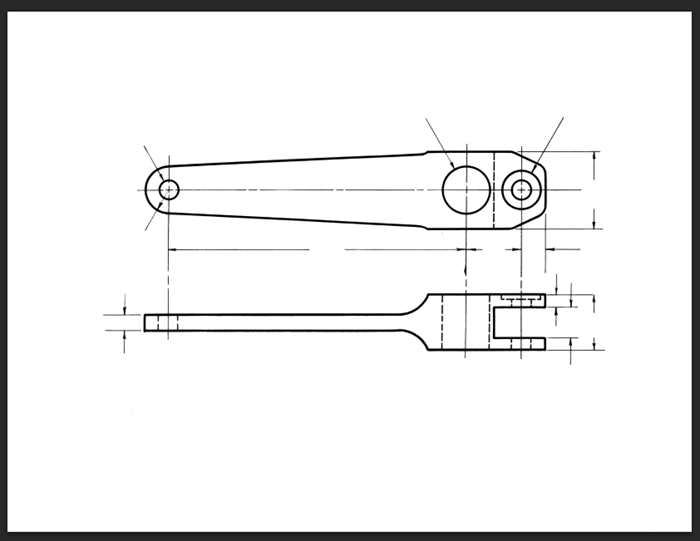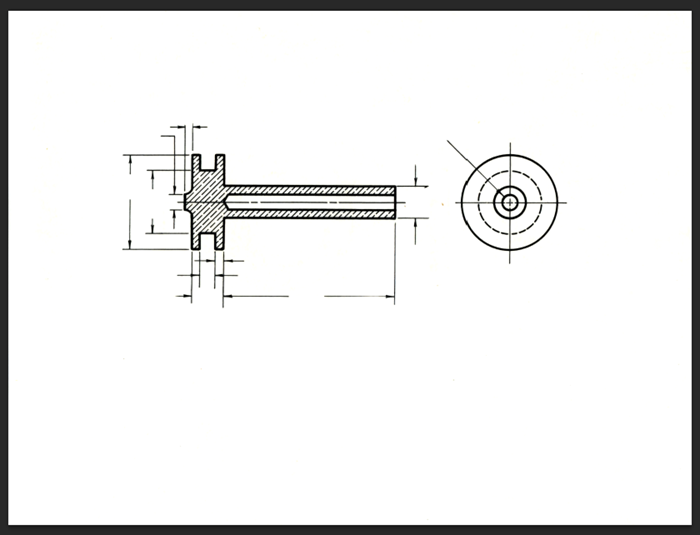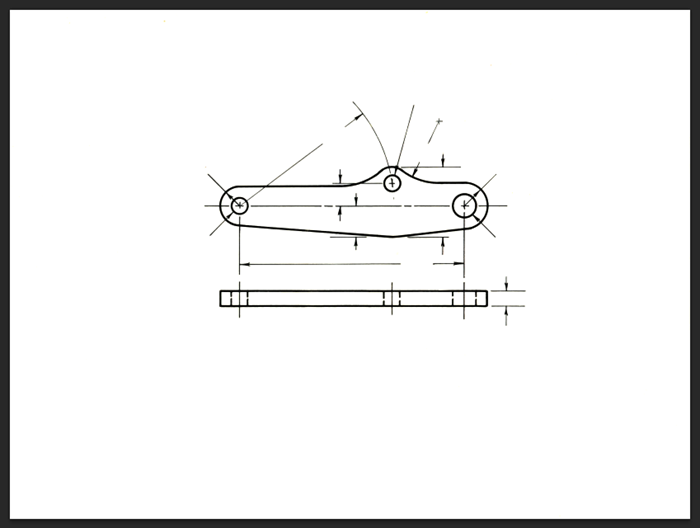Not long ago, I came upon a folder full of beautiful, hand-inked mechanical drawings at an estate sale. The drawings were on 8.5 x 11-inch vellum paper, and none of them had measurements, call-outs, or identification of any kind. This absence of information only added to their mystery and charm, as I knew the great detail and precision that was required for each drawing. Not a one had a mistake or correction that I could find. For the most part, they were perfectly rendered. I can only surmise that each of these illustrative technical drawings was of some kind of widget, or part of something bigger and more complex. The thought also struck me of actually doing a job like this from 9 to 5 each day. It could have been a fairly interesting job, never knowing what part or thing you had to draw each day.
The drawings reminded me that at one time in this country, drafting was a lifetime career for tens of thousands of (mostly) men and women. T-squares, triangles, plastic templates, compasses, and inking tools were standard. Even as a kid in industrial arts class in the early 1960s, I used many of the same tools as our teacher gave us what was then thought to be key knowledge to prepare us for life.
The drawings I found and purchased were in a folder with numerous (now obsolete) technical photographs from a large electrical manufacturer that is still headquartered in St. Louis, Missouri. The best I can date these drawings is around 1960, more than a half-century ago. At that time, computer aided graphics were only in the research phase. The term CAD (computer aided design) eventually appeared in the early 1970s, but was only capable of producing two-dimensional drawings, not much better than the hand drawn images similar to the ones I show you today.
Finally, by the 1980s and 1990s new processes were developed, allowing—for the first time—more advanced three-dimensional solid modeling processes. Today, new algorithms and advanced computer software can quickly create three-dimensional drawings—still requiring some skill from the using, but perhaps lacking the human touch these drawings are endowed with.
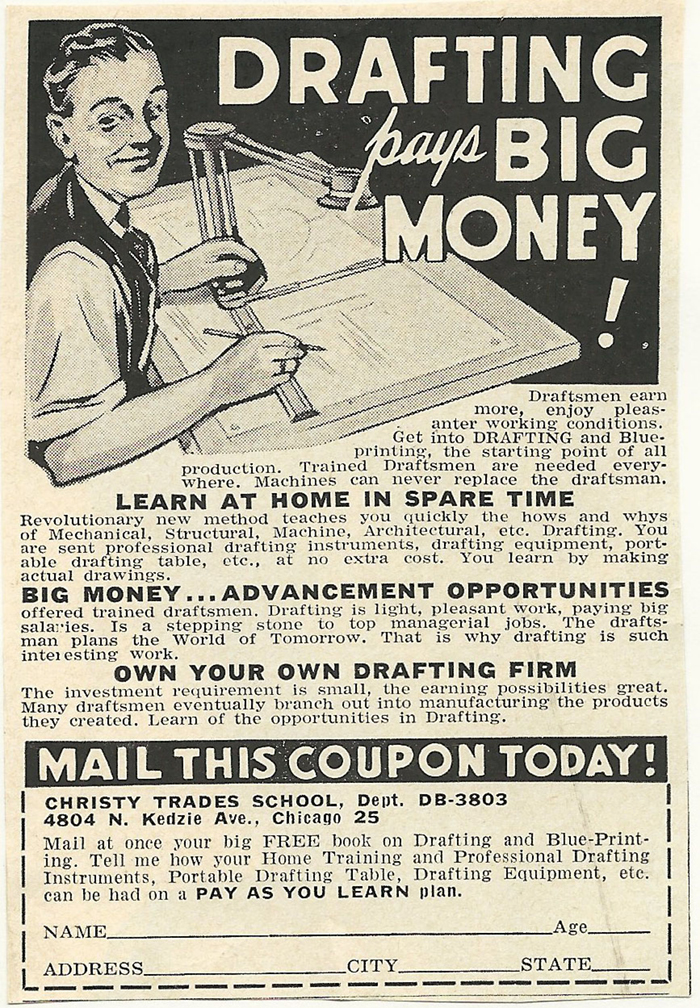
Early 1960s Popular Mechanics advertisement about the exciting and high paying career of being a draftsman.
